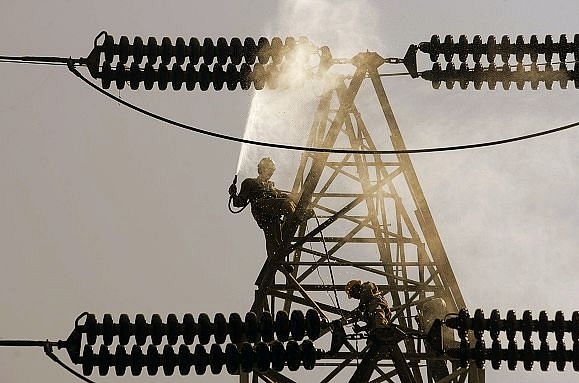Infrastructure
End To Subsidised Power, Complex Tariff Structure And More: Draft Electricity Bill Proposes Much Needed Reforms In The Sector
- The draft Electricity Bill, 2020, is public. And it proffers the ‘pay-for-what-you-use’ principle as against asphyxiating socialist models such as cross-subsidy — which is good news.

Representative image of an electricity tower in Mumbai (Satish Bate/Hindustan Times via Getty Images)
One of the key phrases that you would have heard from economists and policy wonks of late is that ‘never waste a crisis as an opportunity to reform’.
Indeed, in India, reforms are either by stealth (as mentioned by Montek Ahluwalia) or induced by a crisis such as the 1991 reforms.
It is, therefore, important to discuss a key area of reforms — in pricing of electricity which has been discussed over decades and for which the government has made the draft Electricity Bill, 2020 public.
Before we discuss the bill, here’s an interesting fact; several East Asian economies that followed an export-led growth strategy have a power policy that cross-subsidises industrial power tariffs by charging residential connections a higher rate. That is, industrial power tariffs are lower than for residential connections.
In contrast, consistent with our fascination with Nehruvian socialist policies, we cross-subsidise residents by charging industry more for power.
A consequence of this is that our industries face a higher input cost compared to their competitors. This was combined with high rates of taxation (they have been lowered since 20 September), high cost of capital and a complex set of regulations.
No wonder we missed the bus while other East Asian tigers transformed their economies.
The last few years have witnessed a policy change on some of these issues. However, power pricing continued to be a major area where we needed reforms.
The US-China trade war and now COVID – 19 will ensure decoupling of global supply chains from China over the next few years and therefore, this reform can be a potential catalyst in further encouraging companies to look at India as a viable alternative.
The new bill, or rather, the draft, discusses a complete overhaul of the power distribution sector, which at present, is the most vulnerable part of the power distribution chain.
The key point, however, is regarding subsidised power rates where the bill asks all state regulatory commissions to determine tariff for retail sale without any subsidy under Section 65 of the Act.
Moreover, it proposes a removal of the surcharges levied on industrial consumers over time, which are used to cross subsidise the power given free to agriculture or subsidised power to residential connections.
Moreover, the new bill would even restrict power departments from deferring revenue recovery.
In its simplest form, the new bill proposes a radical change in electricity pricing, where consumers will be asked to pay the amount that they should ordinarily be paying so that the electricity tariff at its bare minimum reflects the true costs.
This is an important reform and is a significant departure from the conventional policies that focus on using public utilities as an electoral freebie which creates significant long-term problems for the sector.
It is equally important, however, to strengthen the regime for enforcement of power contracts as several states have reneged on them in the past, which has created a lot of problems for companies that have already made heavy investments in the sector.
There are some regulatory overhauls that have been proposed under the new Act. However, their success cannot be judged ex-ante based on prior experience.
Some of these changes include creation of an appellate tribunal of electricity with powers similar to that of a civil court and create a new dispute resolution authority.
A simple power tariff should, in principle, reduce litigation and disputes. But the most important change which would meet stiff resistance from states includes the proposal for load despatch centres to monitor payments by states before supplying electricity.
This is important to instil discipline on payments by respective state governments.
The new draft code is indeed encouraging and addresses major issues that have been highlighted over the years.
It can fix some of the long-standing issues that have crippled the power sector and have restricted the growth of our industry over the years.
It comes at an opportune time where pushing for them should be relatively easy.
However, the important thing would be to go ahead with it and ensure that a bulk of what has been proposed makes its way into the final Act.
Support Swarajya's 50 Ground Reports Project & Sponsor A Story
Every general election Swarajya does a 50 ground reports project.
Aimed only at serious readers and those who appreciate the nuances of political undercurrents, the project provides a sense of India's electoral landscape. As you know, these reports are produced after considerable investment of travel, time and effort on the ground.
This time too we've kicked off the project in style and have covered over 30 constituencies already. If you're someone who appreciates such work and have enjoyed our coverage please consider sponsoring a ground report for just Rs 2999 to Rs 19,999 - it goes a long way in helping us produce more quality reportage.
You can also back this project by becoming a subscriber for as little as Rs 999 - so do click on this links and choose a plan that suits you and back us.
Click below to contribute.
Latest